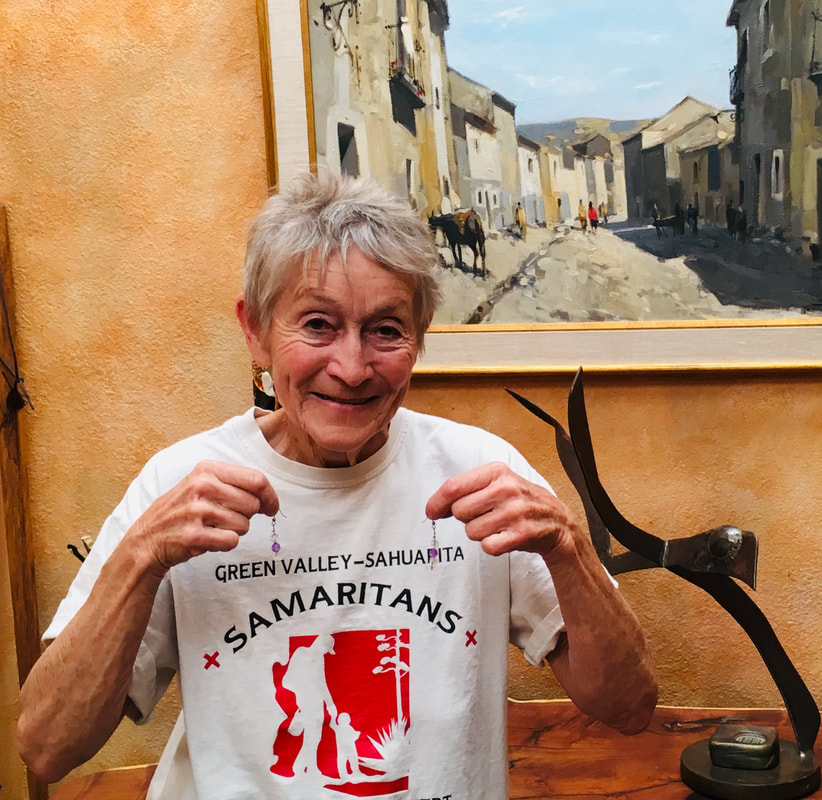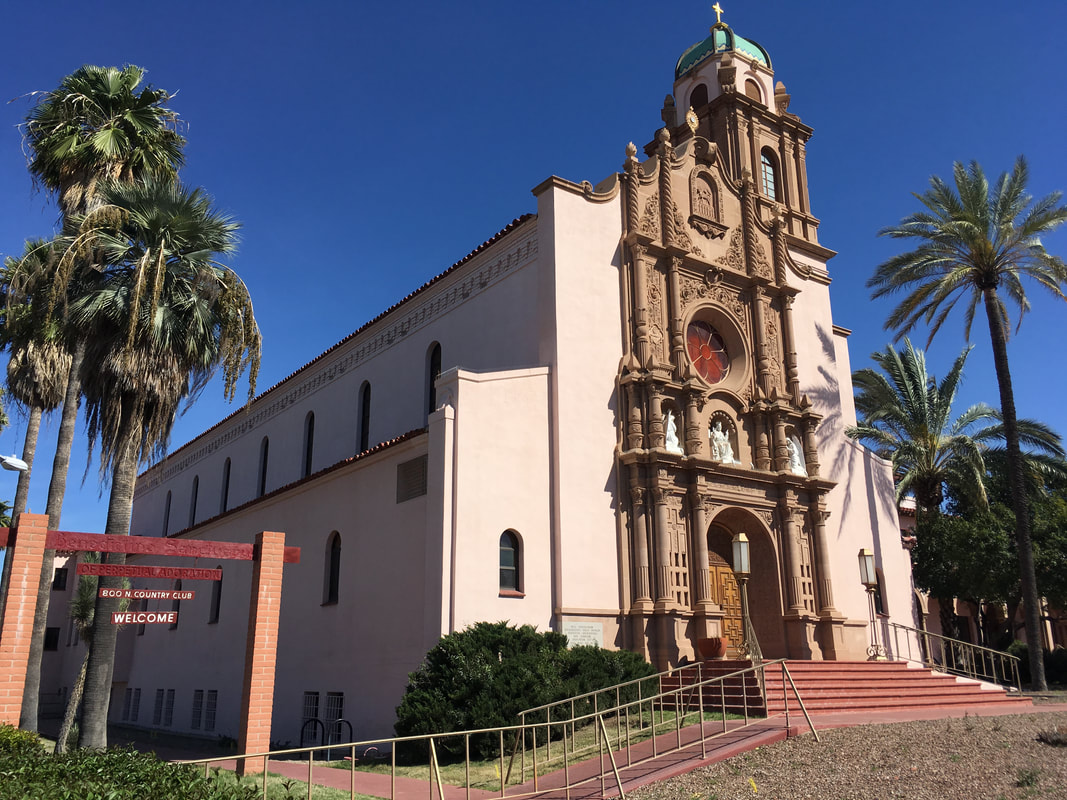My Spanish came in very handy, both in volunteering at a shelter in Tucson and for speaking with migrants in Nogales, Sonora.
We worked with several members of the Samaritans group, made up almost exclusively of retirees who drive through the desert looking for anyone who might need help and who also walk various distances to place plastic jugs of water, snack food and socks at locations along migrant routes. Since 2001, more than 2,500 bodies have been recovered from the Tucson Sector, which covers 262 miles of the border. Think about that. No one knows how many more have died and never been found.
One thing became clear: many fewer people are trying to evade Border Patrol and cross through the desert to the U.S. side and many more are coming with their children and presenting themselves to authorities, seeking asylum.
Trump keeps pursuing more and more extreme avenues to keep people out. He even threatened to completely close down the whole southern border while we were there.
We experienced a whole volunteer-run, bi-national series of operations to help the migrants with food, shelter and medical care, who are fleeing the most horrific circumstances: the cartels seems to control everything, and they demand regular extortion payments from folks just trying to sustain small businesses and support their families; when people can no longer pay, the threats follow, and then the loss of everything, and sometimes murder. There was a recent story in the NY Times about the gruesome murders of Honduran women in particular, which is its own unique nightmare.
Then there is the climate-related disaster – the ongoing drought in the “Dry Corridor” of Guatemala, Honduras and El Salvador – which has destroyed cash crops like coffee as well as subsidence crops like beans, corn and tomatoes. Several Guatemalan men I was chatting with in the Monastery, the shelter in Tucson, all told me there was no work and no way to grow food for their families, which led them to flee. “Climate change” is not included among the official reasons that allow asylum, but it obviously should be. The U.S., through its greenhouse gas emissions, is directly responsible for much of the desertification south of the border.
On our first day we went with Shura, a 77-year-old Samaritan volunteer, through the DeConcini gate into Nogales. She’s been doing this work since 2001, and it honestly seemed like she knew all the migrants on the street, all of whom she greeted with hugs and kisses. (In the photo above Shura is holding earrings made and gifted to her by a young migrant boy.) We entered a tiny room with a blanket hung over the door opening to find about 20 migrants inside, sitting on thin mattresses in family groups. They had come from shelters in Nogales and were awaiting their turn to cross the border and apply for asylum. Right after we returned home a federal judge in California ruled that the U.S. can’t force asylum seekers to wait in Mexico, but a three-judge panel of the Ninth Circuit Court of Appeals ruled in Trump's favor. More litigation will follow.
Then we visited el Comedor, a feeding program run by the Jesuit Kino Border Initiative. They feed both people who have been deported from the U.S. as well as those still hoping to get in.
On the U.S. side, we volunteered for a few days at a beautiful former Benedictine Monastery in Tucson that’s being used temporarily as a shelter by up to 300 people at a time. (See photo below.) The volunteers offer food, cots, clothing, medical care, toys and help arranging for their transportation to the migrants’ sponsors around the country – as well as love and respect. Click here to read or listen to an interview I did with the site manager for Between the Lines, and here for my Forest & Trees show featuring many voices. (Note: my show starts 35 seconds in.) Many of the migrants had been bused over from El Paso – Ground Zero for the influx of people fleeing their home countries – where they were forced to sleep on rocks under a bridge, exposed to the elements with just an aluminum “space blanket.” I actually saw one and was dismayed to learn it’s thinner than a piece of aluminum foil. Many of the young kids were sick, and I also met a dad who had a terrible sore throat and other respiratory symptoms. I asked if his young daughter had gotten sick, and he said, “No, because I cradled her in my arms.” For some reason that really got to me.
These were all people who had passed a credible fear hearing, demonstrating to immigration officials their fear of returning to their home countries. I learned from an immigration attorney that 90 percent or more of those who apply for asylum pass this first stage, but that very few actually gain asylum, since the allowable reasons keep shrinking under Trump (e.g., his administration has ruled that violence, including domestic violence, is not a valid reason).
There seem to be as many dads with kids here as moms, including many very young women who are nursing babies. These were the lucky ones who did not have their infants ripped from their breasts and separated from them. There are also intact families of mom, dad, and two or three children.
It’s inspiring to see what volunteers can put together in very short order to care for those in need. It’s the total opposite of how the U.S. government operates.
More border stories to come.


 RSS Feed
RSS Feed
